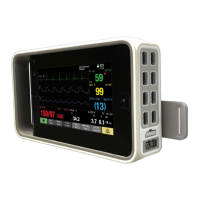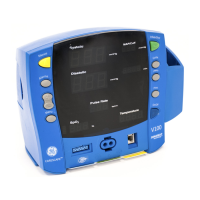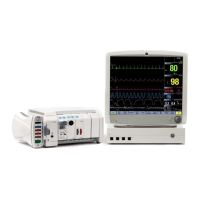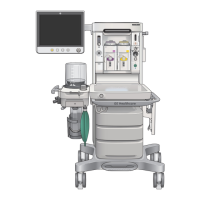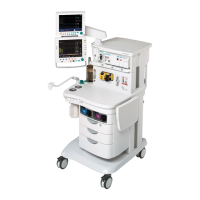ECG
ProblemSolution
●TheSpO
2
parameterifavailabledoesnotindicate
beatdetectionsintheprevious30seconds.
WhyisthemonitorcallingVTachwhenthepatientis
notinVTach?
Themonitoringsystemmaybedetectingawider
QRScomplexorartifactinsomeoftheanalyzedECG
waveforms.Inaddition,theVleadsmaybeexhibiting
polaritychanges,whichmayoccasionallycausean
inaccuratecall.
1.Assessthepatient.
2.ChecktheECGsignalacquiredfromthepatient.
●ViewallECGleadstoassessthewidthofthe
QRScomplexesintheanalyzedleads.
●Ifartifactexistsinanyoftheanalyzedleads,
reprepthepatient’sskin,replaceelectrodes,
andadjusttheelectrodeplacement.
●ItmaybebenecialtomoveVleadelectrodes
(chestlead)toalternateprecordialelectrode
placementstoimprovedetection.
3.Relearnarrhythmia.Itisimportanttorelearn
thepatient’sECGpatternanytimetheelectrode
congurationisadjusted.
Iftheproblemcontinues,determinetheleadwith
thenarrowestQRScomplex,displaythatlead,then
switchtosingleleadanalysissoallarrhythmia
interpretationsarebasedonthissingleECGlead.
STdetection
AbouttheSTanalysis
NOTE
Multi-leadSTAnalysislicenseonly.
Ifenabled,STanalysisstartsautomaticallyaftertheECGleadshavebeenconnected
andQRSdetectionhasstarted.ThemessageLearningdisplayswithineachQRS
complexwindow.Oncetheprogramhascompletedthelearningphase,STvaluesare
updatedevery10seconds,QRScomplexesevery40seconds.
STdetectionwithPDMandE-modules
Duringthelearningperiod,thealgorithmusestheisoelectricreferenceandtheJ+
referencepointstocalculatetheSTvalues.Thealgorithmautomaticallysearchesfor
theJandISOpoints.Thesesettingscanbeadjustedforthecurrentpatient.
STdetectionwithTRAM
Duringthelearningperiod,thealgorithmusestheisoelectricreferenceandthe
J+referencepointstocalculatetheSTvalues.Oncethelearningiscomplete,the
dominantQRScomplexbecomesthetemplateforSTsegmentanalysis.Thealgorithm
usescontinuouscorrelationandincrementaltemplateupdating.Continuous
correlationattemptstondthebestmatchbetweeneachincomingcomplexandthe
182CARESCAPEModularMonitors2062971-001
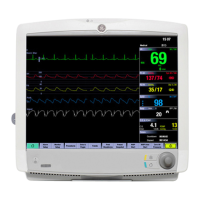
